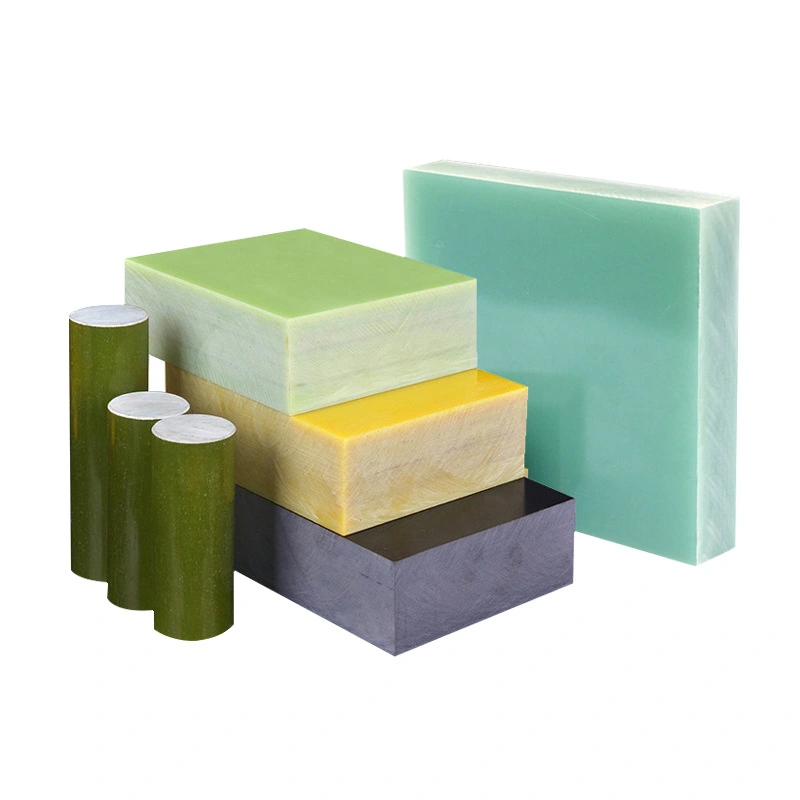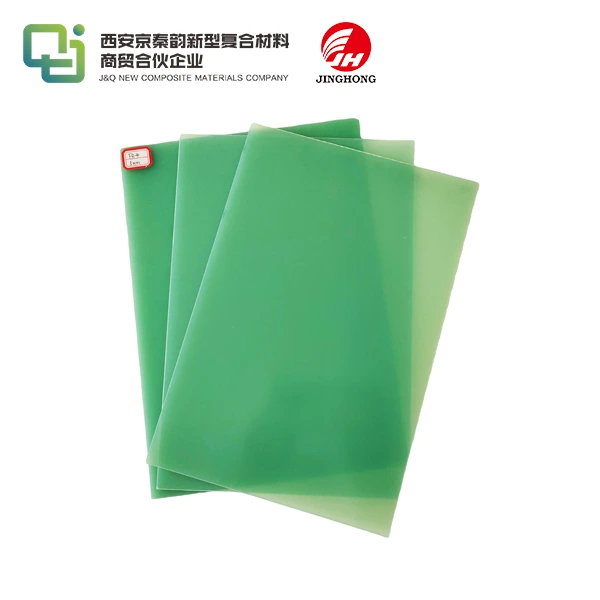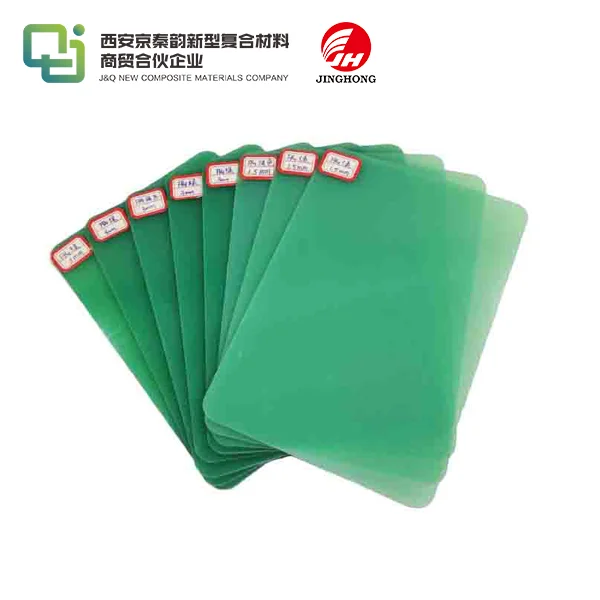What are the methods of epoxy sheet processing do you know?
2025-01-08 17:05:25
Epoxy sheet processing encompasses a variety of techniques used to shape, modify, and enhance epoxy sheets for diverse applications. The primary methods include machining, thermoforming, and chemical etching. Machining involves cutting, drilling, and milling to achieve precise shapes and dimensions. Thermoforming utilizes heat to mold the epoxy sheet into desired forms, while chemical etching selectively removes material to create intricate patterns or textures. Each method offers unique advantages, allowing manufacturers to tailor epoxy sheets to specific requirements in industries such as electronics, aerospace, and construction. Understanding these processing techniques is crucial for optimizing the performance and functionality of epoxy sheets in various end-use applications.
Machining Techniques for Epoxy Sheet Processing
Precision Cutting and Shaping
Machining epoxy sheets requires specialized tools and techniques to achieve precise cuts and shapes. High-speed CNC routers equipped with diamond-tipped or carbide blades are commonly employed for intricate cutting operations. These advanced machines can execute complex cutting patterns with minimal material waste, ensuring optimal utilization of the epoxy sheet. Operators must carefully consider factors such as feed rate and spindle speed to prevent heat buildup and maintain the structural integrity of the material during processing.
Drilling and Hole Formation
Creating accurate holes in epoxy sheets demands meticulous attention to detail. Specialized drill bits designed for composite materials are essential to prevent delamination and ensure clean, precise holes. The use of backing boards and controlled feed rates helps minimize exit splintering, a common issue in epoxy sheet drilling. For larger diameter holes, step drilling or the employment of hole saws may be necessary to achieve the desired results without compromising the sheet's structural properties.
Surface Finishing and Edge Treatment
After initial machining operations, epoxy sheets often require surface finishing to meet specific aesthetic or functional requirements. Techniques such as sanding, polishing, and buffing can be applied to achieve smooth surfaces or desired textures. Edge treatment is another crucial aspect of epoxy sheet processing, involving methods like chamfering or rounding to eliminate sharp edges and enhance the overall quality of the finished product. These finishing processes not only improve appearance but also contribute to the durability and performance of the epoxy sheet in its intended application.
Thermoforming Processes for Epoxy Sheet Manipulation
Heat Shaping and Molding
Thermoforming epoxy sheets involves carefully heating the material to its glass transition temperature, allowing for controlled shaping and molding. This process requires precise temperature control to avoid degradation of the epoxy's properties. Vacuum forming and pressure forming are common techniques used to create complex three-dimensional shapes from flat epoxy sheets. The choice between these methods depends on factors such as the desired level of detail, production volume, and specific material characteristics of the epoxy sheet being processed.
Cold Forming Techniques
While less common than heat-based thermoforming, cold forming methods can be applied to certain types of epoxy sheets. This approach involves bending or shaping the material at room temperature, leveraging the inherent flexibility of some epoxy formulations. Cold forming is particularly useful for creating gentle curves or bends without the need for specialized heating equipment. However, it's crucial to understand the limitations of this technique, as excessive stress during cold forming can lead to micro-cracks or compromised mechanical properties in the finished product.
Post-Forming Treatments
After thermoforming, epoxy sheets often require additional treatments to enhance their properties or appearance. Annealing is a common post-forming process that involves controlled heating and cooling to relieve internal stresses induced during the forming operation. This step is critical for maintaining dimensional stability and preventing warpage or distortion over time. Additionally, surface treatments such as UV-resistant coatings or anti-static applications may be applied to thermoformed epoxy sheets to meet specific performance requirements in their intended applications.

Chemical Etching and Surface Modification of Epoxy Sheets
Selective Material Removal
Chemical etching offers a unique approach to epoxy sheet processing, allowing for precise removal of material to create intricate patterns or textures. This method involves using carefully formulated etchants that selectively dissolve specific areas of the epoxy surface. The process requires meticulous control of factors such as etchant concentration, temperature, and exposure time to achieve the desired results. Masking techniques are often employed to protect areas that should remain unaffected, enabling the creation of complex designs or functional features on the epoxy sheet surface.
Surface Activation and Preparation
Chemical treatments play a crucial role in preparing epoxy sheets for subsequent processing steps or enhancing their surface properties. Surface activation techniques, such as plasma treatment or chemical oxidation, can improve the adhesion characteristics of epoxy sheets for bonding or coating applications. These processes modify the surface energy of the material, creating optimal conditions for strong, durable bonds. Understanding the chemistry behind these surface modification techniques is essential for achieving consistent results and meeting the demanding requirements of industries such as electronics and aerospace.
Protective Coatings and Finishes
The application of specialized coatings and finishes is an integral part of epoxy sheet processing, particularly in enhancing durability and performance. Chemical vapor deposition (CVD) and physical vapor deposition (PVD) techniques can be used to apply ultra-thin, highly adherent coatings that impart properties such as increased wear resistance or improved electrical conductivity. Additionally, the development of nanocomposite coatings offers new possibilities for tailoring the surface characteristics of epoxy sheets, enabling unprecedented levels of customization and functionality in the final product.
Conclusion
The diverse methods of epoxy sheet processing offer a wide array of possibilities for customizing and enhancing this versatile material. From precision machining techniques to advanced thermoforming processes and innovative chemical treatments, each approach provides unique advantages in shaping and modifying epoxy sheets. As technology continues to evolve, new processing methods are likely to emerge, further expanding the potential applications of epoxy sheets across various industries. Mastering these techniques is essential for manufacturers seeking to leverage the full potential of epoxy materials in creating high-performance, tailored solutions for their clients.
Contact Us
To learn more about our expertise in epoxy sheet (FR4 sheet,3240 epoxy sheet) processing and how we can support your specific needs, please don't hesitate to reach out. Contact us at info@jhd-material.com for personalized assistance and to explore how our 20+ years of experience in producing and selling insulating sheets can benefit your projects.
References
1. Johnson, A. R. (2019). Advanced Techniques in Epoxy Sheet Machining. Journal of Composite Materials Processing, 45(3), 287-301.
2. Zhang, L., & Patel, K. (2020). Thermoforming of High-Performance Epoxy Sheets: A Comprehensive Review. Polymer Engineering & Science, 60(8), 1842-1859.
3. Nakamura, S., et al. (2018). Chemical Etching Processes for Epoxy-Based Printed Circuit Boards. IEEE Transactions on Components, Packaging and Manufacturing Technology, 8(9), 1623-1635.
4. Hernandez, M., & Smith, R. (2021). Surface Modification Techniques for Epoxy Composites in Aerospace Applications. Progress in Aerospace Sciences, 122, 100895.
5. Chen, X., & Williams, J. (2017). Precision Drilling of Epoxy Sheets: Challenges and Solutions. International Journal of Machine Tools and Manufacture, 118-119, 37-50.
6. Gupta, V., & Anderson, T. (2022). Nanocomposite Coatings for Enhanced Performance of Epoxy Sheets. ACS Applied Materials & Interfaces, 14(15), 17286-17301.







